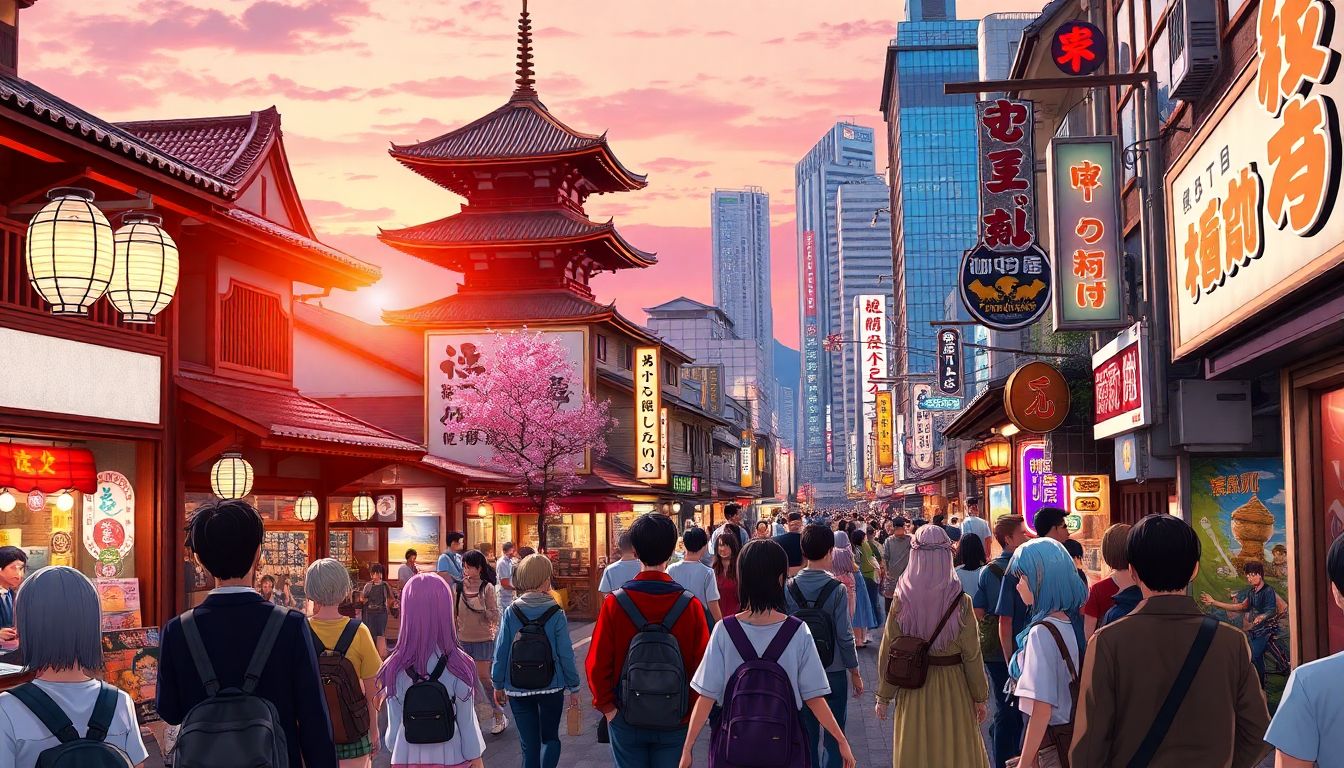
Introduction
Anime has taken the world by storm, captivating audiences of all ages. Its unique style and storytelling set it apart from any other animation. Many wonder, can other countries create something similar? The truth is, anime remains truly Japanese, rooted in a special mix of culture, history, and industry practices. Understanding why anime is only from Japan helps us appreciate its true origins and the cultural identity it carries.
The Cultural Roots that Define Anime
Japan’s Rich Cultural Heritage and Its Influence
Japanese culture plays a big role in shaping anime. Traditional arts like ukiyo-e woodblock prints and samurai movies influence anime visuals. Folklore and history often come alive in characters and stories. Themes like Shinto beliefs, spirits, and festivals show up often. These elements make anime feel deeply connected to Japanese traditions.
Language and Cultural Nuances
Language is more than just words in anime; it carries meaning. Japanese idioms and honorifics add depth and authenticity. When translators adapt anime for other countries, some of these nuances get lost. Cultural references—like customs, food, or social norms—are familiar mostly within Japan but add charm worldwide.
Societal Values Embedded in Anime
Themes like loyalty, respect, and community reflect Japanese values. Many characters act with honor and selflessness, showing societal norms. These shared ideals influence stories, making them resonate with Japanese audiences first. The societal context shapes character growth and plot twists, making anime uniquely Japanese.
Historical Development of Anime as a Japanese Industry
Origins of Anime in Japan
Anime’s roots date back to the early 1900s. The first Japanese animation, "Namakura Gatana," appeared in 1917. Studios like Toei Animation formed in the 1940s, building Japan’s solid industry. These early efforts set the stage for what anime would become.
Post-WWII Growth and Global Recognition
After World War II, anime exploded in popularity. Osamu Tezuka created "Astro Boy" in the 1960s, transforming what animation could be. The Japanese government saw the industry’s potential and supported it. This helped anime grow both at home and abroad.
Industry Structure and Production Techniques
Japan developed its own animation styles and techniques. Studios refined workflows, using rhythmic timing and unique character design. Technological innovations like digital coloring appeared later but built on a foundation of Japanese creativity. These methods define anime’s distinctive look.
Why Anime Remains a Japanese Phenomenon
Cultural Exclusivity and Industry Ecosystem
Anime’s identity stays strong thanks to Japan’s unique culture. Its domestic market is large enough to sustain the industry. Cultural policies protect and promote authentic anime. Without this ecosystem, it would be hard for other countries to create the same genuine style.
Language and Localization Challenges
Adapting anime for global audiences isn’t easy. Cultural references, idioms, and humor often don’t translate well. This can lead to misunderstandings or loss of original meaning. It limits how much anime can be perfectly appreciated outside Japan.
Global Influence but Limited Replication
Other nations have tried to produce similar animation—like Korea’s manhwa adaptations or Western cartoons inspired by anime. Still, they lack the deep cultural roots and societal nuances. Authentic anime is hard to copy because it’s more than just visuals; it’s a reflection of Japanese life.
The Impact of Japanese Society on Anime Themes
Societal Shifts Reflected in Anime
Japanese society has changed greatly over the years. "Neon Genesis Evangelion" reflected post-war fears and identity struggles. Modern anime often tackles issues like technology, identity, or environmental concerns. These themes mirror the societal mood and values of Japan.
Cultural Preservation Through Anime
Anime helps keep Japanese traditions alive. Festivals, cuisine, and language appear often. Even modern stories carry echoes of old customs. This makes anime a bridge to Japan’s culture, no matter where viewers are.
Actionable Tips for Fans and Creators
- When watching anime, try learning about Japanese customs and language to deepen your understanding.
- For creators, respect and incorporate Japanese culture thoughtfully and accurately.
- Choose localized versions that include cultural explanations to better grasp the authentic feel.
Conclusion
Anime’s roots in Japan run deep—through history, culture, societal values, and industry practices. While other countries can produce inspired animation, authentic anime remains uniquely Japanese. Its cultural DNA is woven into every story, aesthetic, and character. Recognizing this helps us appreciate why anime continues to be a vibrant symbol of Japan’s rich cultural fabric and why respecting its origins only enhances our experience.


Comments ()